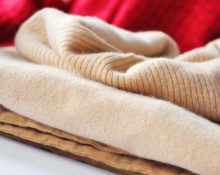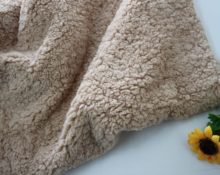Lovers of beautiful things often ask the question: “what is warmer - wool or cashmere?”.

After all, cashmere and wool look very similar, but have different structures. The pieces look stunning and regal considering their importance in tailoring. So, what heats better? The answer is in the article!
How is cashmere different from wool?
We present to your attention 7 differences:

- Cashmere fibers are obtained by combing special breeds of goats. Lightweight material gives a feeling of weightlessness when worn.
- The threads of the first are very thin and delicate to the touch, while the second are rough.
- Cashmere items are better chosen because of their durability; wool is slightly inferior in this regard.
- Clothing is more comfortable than wool.
- The cost is higher than that of a wool product. And this is justified by the quality of the material.
- The huge difference lies in terms of production.
- Cashmere does not itch when worn, but wool does.
- Does not cause irritation on the body, while wool hair can cause allergies.
Advantages and disadvantages of cashmere
7 positive qualities of cashmere:
- Warm and light things are created from the material at the same time;
- equally good in both summer and winter;
- easy to care for;
- quickly absorbs moisture, which it pushes to the surface, where natural evaporation then occurs;
- responds well to frequent washing, including manual and machine washing;
- not electrified;
- repels dust particles and sticky debris.

3 negative properties you need to know about:
1. High sensitivity to present odors. Before putting on any product, spray your body with perfume. Then wait until it is completely absorbed, and only then put on any item.
2. Overpriced for low-quality goods. Often they sell fakes that look very similar to natural cashmere.
3. A moth appears and quickly devours the matter. Therefore, carefully monitor things made from this material.
Pros and cons of wool

Positive sides. This is a natural material that has a great effect on human joints. Gives positive dynamics in the process of blood circulation in the body. It has the ability to allow air masses to pass through, which allows the body to breathe. Has a fairly long service life (up to 25 years), only if handled correctly.
This fact has indeed been proven by many years of use.
Negative sides. If stored improperly, moths may develop.
A common cause of moths is lack of air, when wool items lie motionless for a long time.
People with sensitive skin should avoid wool, as it can cause allergic reactions. Over time, fibers can cake and lose their original appearance. Next, you should take into account the high cost of the purchase.
Which is warmer: cashmere or wool?

Wool is warmer than cashmere because the threads are thicker and different in appearance. Dense threads do not allow frost and cold to pass through. Cashmere is also warm, but cannot withstand severe frosts, and gradually a person freezes anyway. This applies to outerwear.
Although cashmere socks are better and warmer, this has been proven more than once. Therefore, each item made from these materials should be considered separately to understand which is warmer.
When answering the question posed, you should first fully understand the materials and then draw the appropriate conclusions.


 0
0





